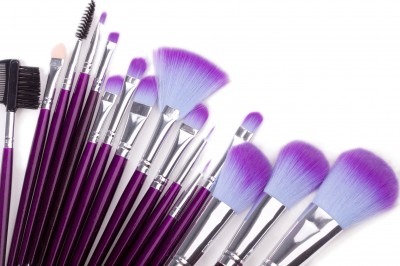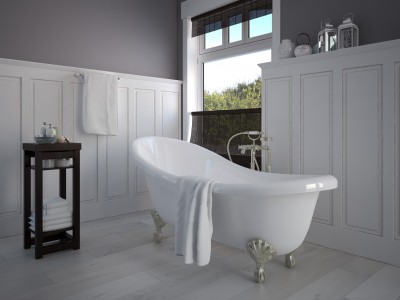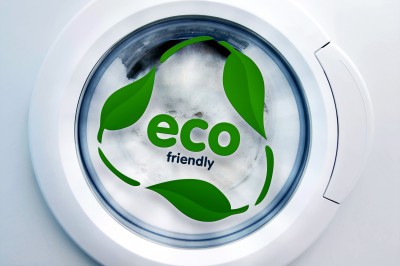Bathroom
Homemade bathtub film cleaner
Homemade Cleaners For The Bathroom
Homemade Clean shower door tracks
Homemade Cleaning Tap Fixtures & Shower Heads
Homemade Deodorize the toilet bowl
Homemade Freshen air for the bathroom
Homemade Makeup Brush save cleaner
Homemade porcelain enamel, stainless steel and concrete srub
Homemade Spray shower doors
Homemade tile cleaner
Landry room
Homemade Bleach Natural
Homemade Laundry Soap Detergent
Homemade Laundry Stain Pretreater
Homemade Scented Fabric Softener
_____________________________________________________________________________________________________________________________________________________
Bathroom
Tip: wipe it with white distilled vinegar and scour with baking soda.
Homemade Cleaners For The Bathroom
See Homemade Wall and Floor Cleaner
Homemade Clean shower door tracks
Tip: filling them with hot white distilled vinegar and letting it sit for an hour or two add hot water into the tracks and wash and scrub with a brush
Homemade Cleaning Tap Fixtures & Shower Heads
(The acid from the vinegar and lemon works to dissolve the calcium carbonate, doing all the heavy lifting for you while it soaks.)
Paper Towels & White household vinegar
Just soak the paper towels in the vinegar put it around the tap fixture or the showerhead leave it and check once in a while, if the paper towel is dry put more vinegar on it. After just scrub with a small brush or an old toothbrush
Shower Heads
Tip#1: Give it a good soak in a 75/25 vinegar and hot water for several hours
Tip #2: Lemon cut in half or lemon juice. Scrub surfaces with the lemon such as shower doors and walls
Tip #3: White vinegar on a sponge, sprinkle baking soda over it will be mild abrasive to help with the scrubbing job.
Tip #4: Use a cut lemon or lemon juice on a sponge, sprinkle baking soda over it will be mild abrasive to help with the scrubbing job
Homemade Deodorize the toilet bowl
Tip: 3 cups white distilled vinegar let it sit for 30-45 minutes, Scrub well with the toilet brush and flush.
Homemade Freshen air for the bathroom
1 teaspoon baking soda 1 tablespoon white distilled vinegar, and 1 cup water Mix in a spay bottle and spay
Homemade Makeup Brush save cleaner
Recipe #1 Dawn Dish Soap- Original, Distilled White Vinegar, Glass Measuring Cup {2 cup}, Water
Mix together 2 tablespoons of white vinegar with 1/2 teaspoon of Dawn dish soap in a glass measuring cup. Fill the rest of the measuring cup with hot water. Place makeup brushes in the measuring cup and allow them to soak for 5-10 minutes. Remove the brushes from the solution and rinse with cold water until the water runs clear. Lay your makeup brushes on a towel and allow them to air dry. You can also hang your makeup brushes upside down if you have a clothes line, by attaching each individual brush to a clothes pin. This way water will not seep down into the brush handle and cause bacteria to grow. Once dry, your brushes are like new!
Be sure to clean your brushes at least every other week for optimal performance and to extend the longevity of the brush. Note: with sponges, your makeup will naturally change the color of the sponge, so if it does not return to its original state don’t worry, it’s still clean and disinfected. As long as the water runs clear and no makeup runs off the sponge after you have soaked it in the solution, then you are good to go.
Recipe #2 Mix together:
13 oz of 70% Isopropyl Alcohol
2 oz Cosmetic Grade Acetone (available at reputable beauty suppliers)
1 oz Jojoba or Grapeseed Oil (to break down cream/liquid makeup, sebum and condition natural hair).
Essential fragrance oils to scent the cleaner (optional)
Liquid food color to tint the cleaner (optional)
Some of my favorite fragrance combinations are:
- Grapefruit/Rose
- Lemongrass/Lavender
- Ginger/Bergamot
- Sweet Orange/Vanilla/Mint
Essential oils of Tea Tree or Grapefruit Seed will add antibacterial properties to your homemade brush cleaner.
Use this formula the same way as you would any commercial spray or quick dip brush cleaner. Store in a tightly sealed non-corrosive acrylic or glass container.
NOTE: You can substitute Ethyl Alcohol (Ethanol) for the Isopropyl Alcohol. It has the same disinfecting properties, but is a better cleanser. Biggest drawback, it’s much harder to find.
Homemade porcelain enamel, stainless steel and concrete srub
Recipe #1
Make a paste with:
1 cup borax
1/4 cup lemon juice
Use a sponge or cloth; rub the stain with the paste Rinse with warm water
Recipe #2
Make a paste with
Lemon and baking soda
gently rub into sink. Wash well with hot soapy water
Tip: Spray white distilled vinegar on the glass, wipe with a sponge and rinse with the water
1/2 cup baking soda
1 cup white distilled vinegar
1 cup light bleach (like the Parisien)
Add to a gallon of warm water
_____________________________________________________________________________________________________________________________________________________
Landery room
Tip: Lemon juice acts as a natural bleaching agent. Put lemon juice onto white linens and clothing and allow them to dry in the sun. Stains will be bleached away.
Homemade Laundry Soap Detergent
Recipe#1 Half a cup of Borax to each wash load, that will boost the cleaning power of your laundry detergent.
Recipe#2 Mix together:
2 cups of Borax,
2 cups of Washing Soda
1 cup of grated Fels-Naptha soap
10 to 15 drops of essential oil, your favorite! (Lavender, Lemon etc.)
Tip: (Ivory or castile soap can be used to replace Fels-Naptha)
Use ½ cup for a full load
Homemade Laundry Stain Pretreater
Tip#1: just spritz on some lemon juice let it sit and soak before washing
Tip#2: make a paste with salt or baking soda, apply to stain then wash
Homemade Scented Fabric Softener
Recipe#1.Combine 1 gallon vinegar with 25 to 30 drops essential oil.Stir the essential oil directly into the container of white distilled vinegar for a minute or so to ensure that the two liquids combine well.
Note that the essential oil is not necessary. The vinegar is the component responsible for softening clothes. It strips away residue on your clothes that would otherwise make them stiff, and it has properties that can break down some of the minerals found in hard water supplies. If you do decide to use essential oils, you can use any scents you want.
Recipe#2. Combine baking soda and hot water. Stir 1 cup (250 ml) baking soda into 2 cups (500 ml) hot water until well combined. Combine the two ingredients in a large bucket or other container.
Note that the baking soda will not dissolve, but it should be completely soaked. This homemade fabric softener is often praised by people who have hard water. Baking soda regulates the pH level in your rinse water, preventing it from becoming too acidic or too alkaline. It also cancels out mineral deposits, like those found in hard water. These mineral deposits are often responsible for making clothes stiff.
Slowly add the vinegar. Slowly add 1 cup (250 ml) white distilled vinegar to the mixture. Stir gently until the baking soda is dissolved.
The vinegar will react with the baking soda, causing a fizzy chemical reaction. Do not pour the vinegar too quickly or you will end up with a mess. Vinegar strips soap and residue from clothing and also helps to soften hard water. Some believe that the vinegar and baking soda cancel each other out, making them ineffective. The salt that is produced from the chemical reaction acts as a buffer in the rinse cycle, however. Moreover, many of the elements that help soften clothes remain in the solution even after the reaction occurs.
Scent the fabric softener, if desired. If you want to make scented fabric softener, then you need to add essential oil or scent booster to the ingredients. Stir either option directly into the fabric softener solution.
If using essential oils, 25 to 30 drops should be sufficient. If using scent booster, add 1/4 to 1/2 cup (60 to 125 ml) of the crystals to your water and stir until dissolved.Scent booster is usually found in the laundry aisle. It is not a natural product, so it may not be preferable from an ecological sense, but it will lend your fabric softener a pleasant scent and may save you money in the long run.
Pour 1/4 cup (60 ml) into your washing machine during the rinse cycle.
For a normal load, fill a fabric softener ball with 1/4 cup (60 ml) of the fabric softener solution or add the same amount directly to the washer just before the rinse cycle begins.
Do not add the fabric softener to the machine before its primary wash cycle. Pour the rest of the fabric softener into a storage container. Shake or stir well to combine before each use.
Run the rinse cycle as usual. You do not need to do anything special from this point on. Let your rinse cycle finish up as it normally would.
Recipe#3. Cut cotton cloth into small squares. Cut clean cotton cloth into squares that are roughly 5 inches (12.7 cm) along each side.
Cotton works well because it is a natural fiber and relatively breathable. Avoid fabrics with fibers that are spaced too tightly together. Also avoid synthetic fabrics.You can use a rag or old piece of cloth for this, but make sure that the material you use is clean.
Spray each square with white vinegar. Fill a small spray bottle with undiluted distilled white vinegar. Spray both sides of each square until moist to the touch.
Let dry slightly. The cloth can be moist, but it should not be dripping wet by the time you add it to the dryer. The vinegar is the only element in this fabric softener formula that lends itself to actually softening your clothes. It may not be as strong as a liquid fabric softener using vinegar, but some of the effects should still remain.
Add a few drops of essential oil onto one square. Drop 3 to 5 drops of your favorite essential oil onto a cloth square. Spread the drops out so that they seep into the fibers of the entire square.
The essential oil will give your clothes a pleasant yet mild fragrance. You can technically use this method without the use of essential oils, but since the softening effects are less powerful than a liquid fabric softener alternative, it would make more sense to take advantage of the deodorizing and re-scenting abilities of this method.
Recipe#4. Mix coarse salt and essential oil. Add 20 to 30 drops of your favorite essential oil to 2 cups (500 ml) of Epsom salt or coarse sea salt in a medium bowl or container.
Stir well until all of the essential oil has been spread over and absorbed by the salt.
You can use any scent of essential oil you want to use. If desired, you can even combine scents to create your own unique fragrance.
Stir in baking soda. Mix 1/2 cup (125 ml) of baking soda into the scented salts until evenly distributed.
Alternatively, you could leave the baking soda out altogether and add it to your machine separately during the wash.
Add 2 to 3 Tbsp (30 to 45 ml) to the rinse cycle. Before your washing machine enters a rinse cycle, add the scented crystals directly to the water in your machine
Only use 2 to 3 Tbsp (30 to 45 ml) of the fabric softener crystals.
If you did not add baking soda to the crystals, you can add up to 1/2 cup (125 ml) of baking soda in conjunction with this fabric softener per normal load of laundry.
Do not add the fabric softener crystals to the start of the washing cycle, before the washing part actually takes place. Only add it to the washing machine during the rinse cycle.
Run the rinse cycle as usual. You do not need to do anything special from this point on. Let your rinse cycle finish up as it normally would.






